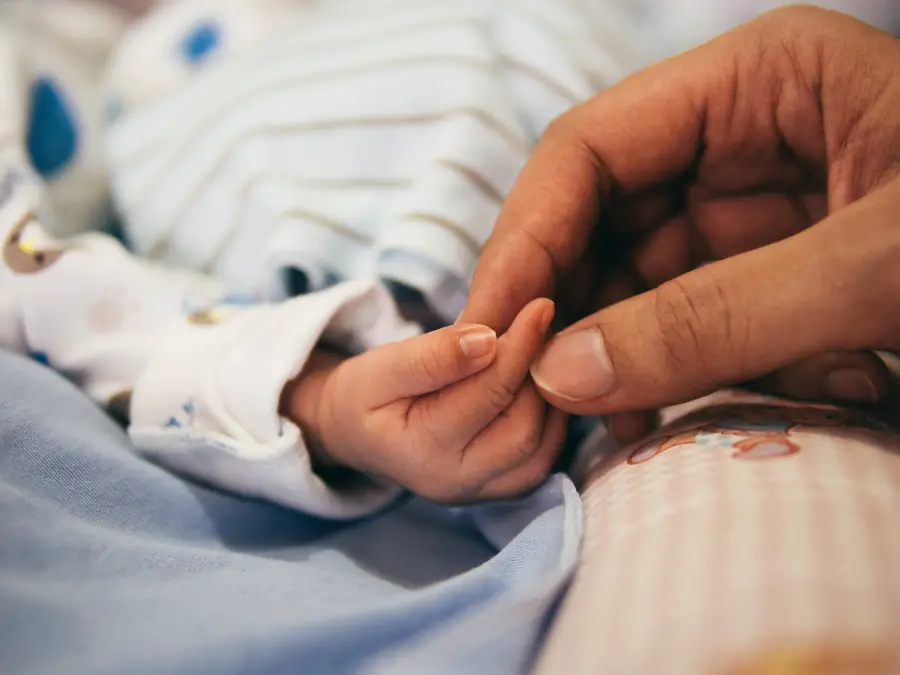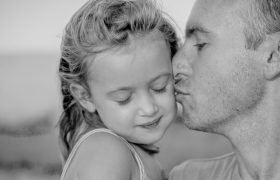Emotional Development in Infancy: A Month by Month Guide
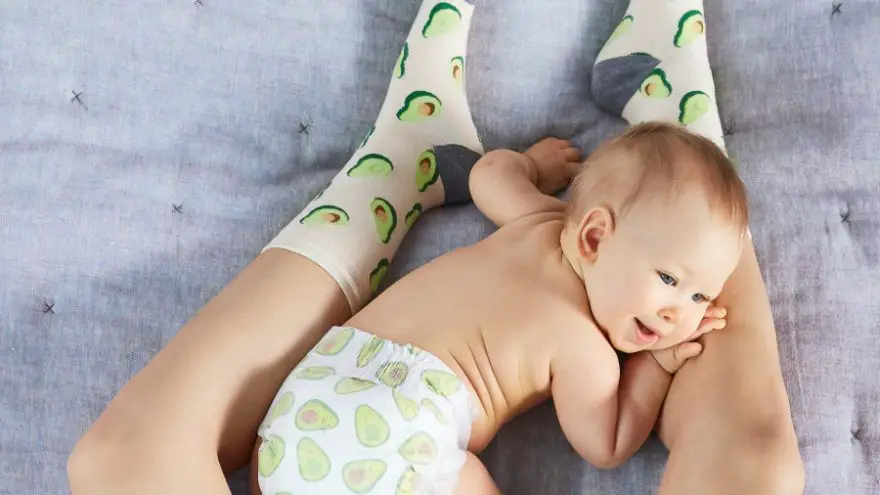
Your baby will go through many changes in regard to social and emotional development during the first year of their life. They start out as a sleepy young newborn, and soon they are alert, responding to their family, and interested in interacting with people near them.
Every month, you will begin to notice your baby changing. They start becoming interested in conversation, they begin to smile socially, they figure out ways to communicate with you, intimidating others, they show jealousy if you show more attention to another child and they will have anxiety around strangers.
Month One
When a baby was just born, they spent most of the time sleeping. Now they are getting older and becoming more emotionally and socially responsive. Babies love to be picked up and become very excited when they are cuddled by you. Children go through many stages of being alert.
The quiet stage is when they are all cuddly and still, and they love looking into your eyes. They enjoy your voice, absorb their surroundings, and get used to their surroundings. They also understand their environment. The active alert stage comes next and your baby moves a lot, looks everywhere and makes new sounds.
The baby has other states of being alert like crying, feeling sleepy, and sleeping. Infants go through the same cycles over and over daily. Most babies start out with their days and nights mixed up, and you can give them less stimulation at night by feeding them in a dark room and putting them directly to bed once they are done with feeding.
During the day, parents can provide more stimulation for them by playing with the baby to help them straighten out their days and nights. Crying is one of your baby’s emotions and this is the one they use to communicate with you.
It’s their only way to communicate at first, and it’s very important to understand that they cry a lot the first month. Your baby’s crying will increase gradually in the first weeks of life, peaking at approximately 6 weeks.
Month Two
This is the month, babies start to express interest and distress by using their facial movements. This is how they show emotion by moving their mouths, eyebrows, and muscles of their forehead in different ways. Your child’s facial expressions reflect the emotions they are feeling at the present moment.
These are not intentional and these emotional expressions communicate as a universal language. During the first couple of months, your baby will be mesmerized by your face and the faces of the rest of the people who care for them. They will increase the ability to maintain eye contact with you at a steady pace.
They much prefer to look at faces than objects. They also begin to mimic facial expressions like sticking out their tongue or opening their mouth really wide.
They won’t imitate any objects that are still or imitate doll faces. This means that your baby notices there are similarities between real people and their parents. As children grow and become older, they start to use mimicking as a critical tool for learning new and different behaviors. Your baby will watch you and other providers, and learn from what you do all the time as well as the providers.
Your baby is beginning to become interested in people having conversations and seems to listen to people taking turns listening and speaking. Your baby will also make sounds if you speak directly to them, and they will also wait for you to answer. If your baby cries, you can simply distract them by talking or singing to them.
This is the beginning of the face to face communication. You can keep it positive between one another by smiling. Your baby will begin to self soothe themselves around this time, and both of you will be much happier.
When you play with baby, keep in mind that having a human being around is better than a material object. Remember to try and interact as much as possible with your baby and don’t pop them in front of a video all day.
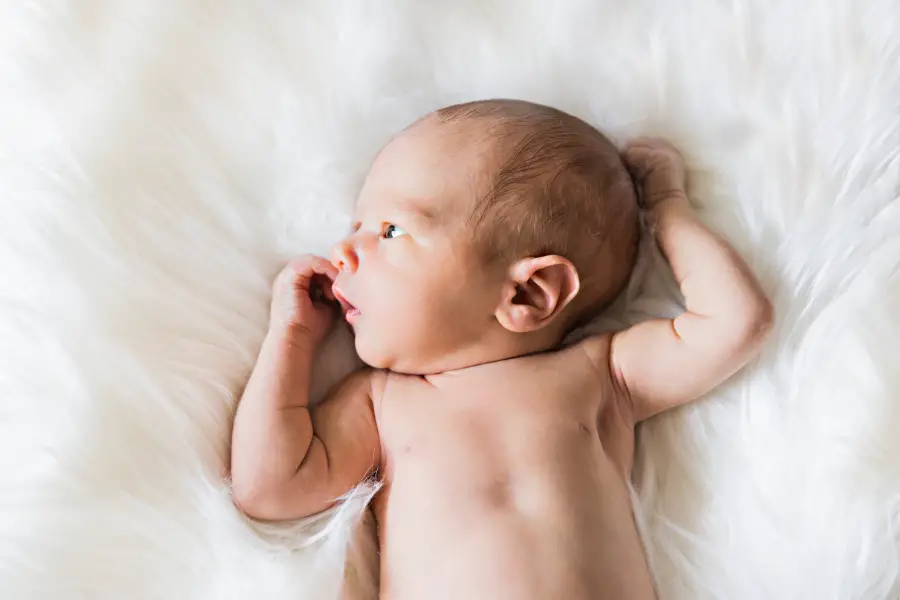
Month Three
During the third month of your baby’s life, your child should begin to stop crying so frequently. They will smile much more and become more animated and joyous. Sometimes things become too emotionally intense for your baby, they will stop looking at your face and look away for a bit.
This is what is called “gaze aversion”, and this means your baby is too stimulated. Parents should remember that baby needs to slow down or needs a break. They can snap like anyone else.
This doesn’t mean that your baby won’t still be fascinated by your voice and they will keep making sounds whenever they are happy and content. Just remember babies still love to imitate you and have you respond to them in the same manner.
Month Four
Now is the time your baby is getting better at communicating with their parents. They begin to put their arms up when they need to be picked up. Parents are also beginning to understand what their cries mean. This is the time both you and baby become happier because of this.
This is the time baby notices you have bouts of emotions, like your tone of voice, facial expressions, and body language. They may begin to imitate the emotions you are showing that they notice. Now if you show them negative emotions, they might react differently.
If you are angry, they might become very upset, when you are feeling sad, they might not look at you and interact with you less, and when you feel fear, they become fearful. When people argue around babies’, they definitely will pick up on this distress and become frightened.
Most often children will cry and become very insecure when their parents start to yell and fight. All children pick up on the actions of those around them and they definitely feel those distressing moments.
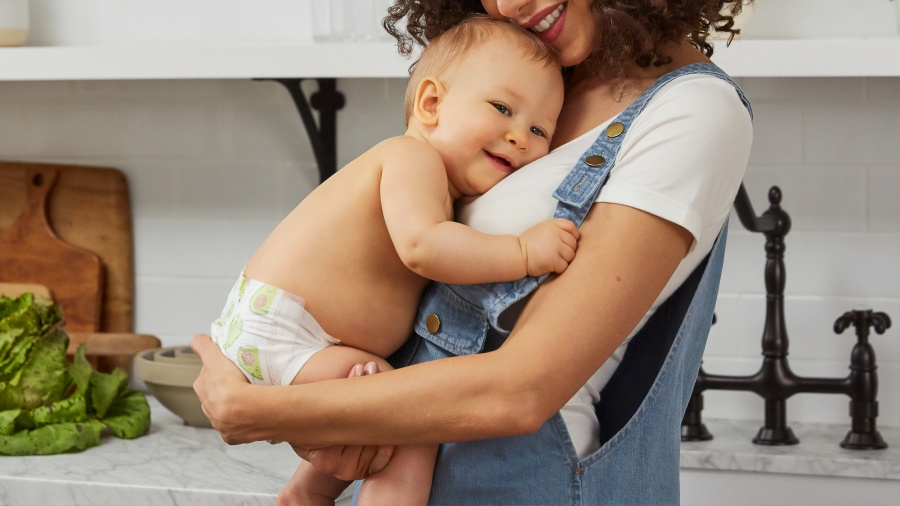
Month 5
This is a great month because it might be your baby’s first laugh. This is a beautiful and magical sound and a sound that parents will do anything to hear again and again. Your little one has not become anxious by stranger anxiety yet, but some children actually do start recognizing the faces of people by four months old and become very anxious and will cry unless they are only with mom or dad.
There is no calming them down after you both leave the house. Some babies are just more adept at recognizing faces and are more anxious at a younger age. These babies are sensitive and this anxiety does carry through to adulthood. Therefore, it’s probably a good idea to watch for signs of anxiety when your child starts school.
Most of the time your little one will express their facial emotions in the way they observe an unfamiliar face. If they do tolerate a stranger, they become very quiet and don’t smile around an unfamiliar face. Babies really prefer to be around people they know, especially their parents.
This is the time that your child shows their anger and frustration by using their facial expressions. Kids only get angry at the moment and they are never angry with their parents. Don’t take this anger personally or feel you are inadequate.
Babies also begin to show their likes and dislikes. If your baby is eating solid food and you offer them something to eat that they don’t want, they turn their heads away with a look of disgust on their face. If they want to try something new and haven’t learned how to do it yet, they definitely let you know how frustrated they are feeling.
Just remember that your child is communicating with they show you how they are feeling. Try to understand your little one and treat them with respect and do not make them feel bad. If he/she feels sad or frustrated with distress, try to calm yourself first, and then you soothe him/her more effectively.
If you start losing patience, find a friend and ask them to watch your baby until you regain your composure. If you are sensitive to your infant’s feelings, this will help them, in the long run, to be able to cope with their negative emotions or someone else’s. Your little one will also cooperate more, and be healthier mentally.
Month 6
This is when your baby will start to imitate your actions and your emotions. When you do something like a cough or bang a drum, they might try coughing or banging on something too. When you smile, they smile.
If you frown, they may look sad, or they might even start to cry. They really enjoy sticking out their tongue if you do. This is the time your baby may turn their head when you call out their names.
They might start following your gaze and try to figure out what you are looking at. This is the beginning of something called joint attention, which is your baby’s ability to coordinate their attention with yours or any of their providers.
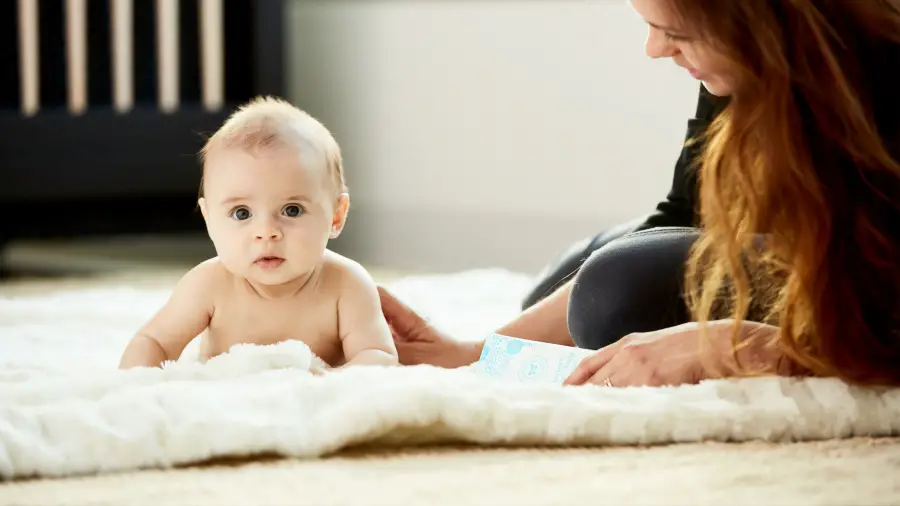
If things become too emotionally intense for your baby, they may start to do things to get your attention. They might turn their head, arch their back, close their eyes, look at something else, turn to you or cry.
This tells you that your baby is becoming overstimulated. You can try giving your baby a break and slip to a slower pace, they become less distressed.
Month 7
This is the month your baby starts showing a new emotion which is fear. They might start becoming upset if they see a strange person coming, they become fearful if their toy scares them, and if there is a large sudden noise. This is when you become quite overprotective and gentler towards their baby.
Just remember to respond in a reassuring way and respect your baby’s feelings, and introduce new things slowly and sensitively. Babies love attention, and they will do anything to get your attention. A good way that babies get their parents’ attention is by attempting to fake a cough or another sound that might alarm you.
Peek-a-Boo and Patty Cake are perfect social games to play with your child and this is the time they really enjoy the games.
Months 8 to 10
This is the time babies begin to show facial expressions that match all their basic emotions: interest, joy, surprise, anger, sadness, disgust and fear. Most babies and people experience one emotion at a time, but sometimes they turn into many combinations. Jack in the Boxes will increase your babies’ sense of surprise, interest, and joy by laughing.
On the contrary, when they hear a loud noise that is sudden, they might look surprised and fear by showing the startled feeling on their face along with fear. Babies might feel anger up to the age of about eight months, however; they are not angry at anyone in particular. A baby at this age does not understand is someone is purposely ruining their goal at the time.
When a baby hits the age of 9 months old, they are just beginning to understand other people’s actions and whether the other person is doing something on purpose to stop them from reaching their goal. When a baby turns nine months old, they are starting to begin to understand how to interpret other people’s actions and behaviors and trying to figure out if they too are purposely stopping them from doing what they choose to do.
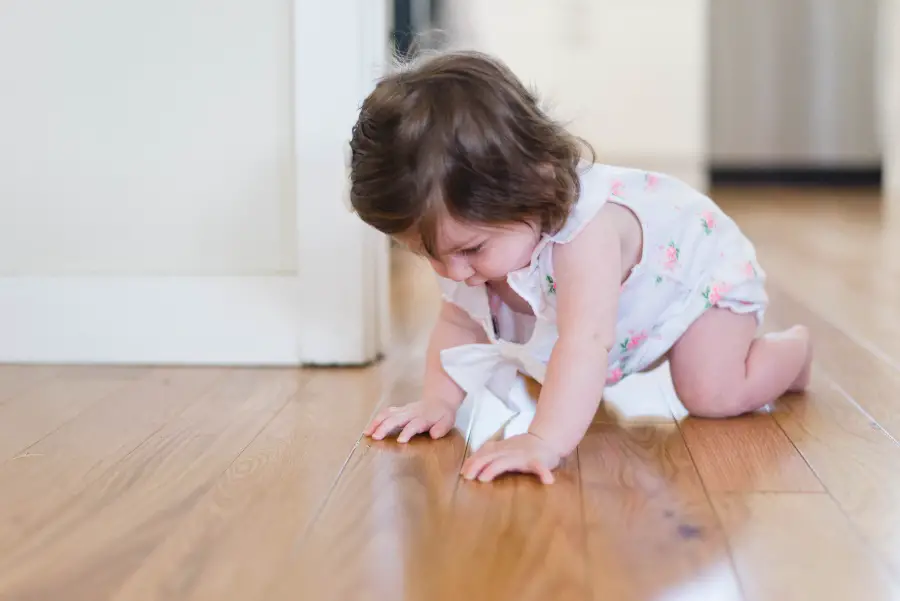
Now your baby has become extremely in tune with other people’s emotions and has become good at reading other people’s faces to figure out how these people are feeling. They still love to copy other people’s gestures and emotions. Their joint attention is improving rapidly and now they begin to point to different objects and make sure you or another provider are watching what is interesting them.
Joint attention is critical for social development and for learning first words. Babies begin to respond more to strangers in comparison with how they respond to the familiar faces they see daily. Some babies are more serious or become less relaxed with strangers, and other babies show definite discomfort amongst strangers.
Stranger anxiety starts because your baby can start telling the difference between familiar faces and those faces unfamiliar to them. They have also developed a strong sense of fear during this stage of their lives. Your little one enjoys being around people they know, but they save mostly all of their affection for you at this point.
If you find that you have to leave your kid with a person they don’t know, you can help them with their discomfort by letting them get to know the new face. Let them know that you feel very comfortable around this new person, and this will help reduce your baby’s anxiety.
Fear might just get the ball rolling when it comes to your baby’s sense of attachment, and they show this by staying glued to your side or their other close providers. They definitely prefer you over anyone else but also feel comfortable around other providers if you left for a minute to use the restroom.
They do this when they start to feel afraid, stressed, distressed, sad, frustrated, or have pain. No one can easily console your child but you and this may feel frustrating to you, but when your kid shows they prefer the attachment of you, this is a healthy sign that he has a preferred attachment to you and is a healthy sign of your baby’s social and emotional growth.
Your little one will start to look at you more and more for the signals telling them what your emotional reactions are in regards if something is safe for them or not. If they feel unsure of what they are doing, they look for reassurance from you. An example is if you don’t like a certain food item and they can tell when you are feeding it to them, and this is when they decide they don’t like this particular food either.
Another example is don’t be overly emotional when you drop your child off at daycare, because they pick up on your fears and start becoming upset. This is where parenting can become difficult because you as parents have to be firm and excited when they are beginning to start school. You can always sign up to be an emotional caregiver.
Months 11 to 12
This is around the end of the baby’s first year, and this is the time they will start to become independent. They start to want to feed themselves and do other things on their own such as brushing their teeth. This may take patience on your part but try and encourage them to do things for themselves. It will make feeding time and caring for themselves in the long run.

By 12 months your baby still experiences their full emotions fully and also with intensity. However, when they get older, they will learn how to regulate their emotions. This means that they start to learn about their emotions in a milder way.
They will find ways to cope with their feelings. An example is when they are fearful, they might not cry or become overwhelmed as they had when they were much younger. Instead, they will go to you or a familiar and comfortable provider for some more reassurance. You can also help your child control their emotions by respecting their signals of communication.
They also might respond in more of a soothing manner when they are feeling distressed. Just remember to try and tone things down when they are too stimulated. During some time in the last two months, your baby will most likely have said their first few words.
When your baby reaches this time in their life, this will be an exciting time for both of you and your baby. As time marches on and goes into year two and the following years, you will be able to start holding a comfortable simple conversation with your baby.
Now, this is the time to start a whole new level of a conversation with a higher level of vocabulary. Always remember that you still have been communicating with your baby since the day they were born.
Red Flags
12-month-olds
There are some things a parent might notice by the time their child reaches 12 months old, and you might want to talk to your doctor or a mental health professional if you notice any of these things happening with your one-year-old.
- Baby doesn’t show any interest in kids their age
- They don’t respond the way you expect them too
- They don’t have the patience to wait for something they want
- They are too rigid about their routine, food, clothing, etc,
- They have limited or fleeting eye contact
- They are not mimicking any of your actions
- They don’t recognize their name
- They don’t follow your point when you are trying to show them something new or bring their attention to something
- They don’t take turns in an easy game that requires taking turns like a “chase” game or “peek a boo”
9-Month-Olds
- The child doesn’t know how to put their weight on their legs with support
- The child can’t sit without help
- The child does not say mama, dada or baba yet
- The child will not play games including playing back and forth
- The child doesn’t understand their own name
- The child can’t recognize familiar family members
- The child won’t look at what you are pointing at
- The child still can’t figure out where you are pointing to
- The child can’t transfer toys from one hand to the other
6-Month-Olds
- The child can’t get things in reach
- The child can’t show any affection for caregivers
- The child can’t respond to close sounds
- The child has problems getting things into their mouth
- The child appears to be like a floppy ragdoll
- The child can’t make vowel signs or wants to even try
- The child can’t roll over in either direction
- The child never laughs or making squealing sounds
- The child appears to be stiff with their muscles
4-Month-Olds
- Baby doesn’t understand the movement
- Baby doesn’t smile at anyone
- Baby can’t hold their heads correctly
- Baby doesn’t coo or make any sounds
- Baby doesn’t out anything near its mouth
- Baby doesn’t push down with legs or both eyes when they are pushed on a hard surface
- Baby has problems moving their eyes in one direction or all of them

There are more red flags for one, two and three months old in regards to socially emotionally development for kids that are newborns.
During the first month watch your infant so you can see if they are startled by loud noises. In addition, observe them, to see if they are using their eyes to briefly follow moving objects. This is a red flag is they aren’t.
During the second month, if your little one isn’t responding to loud noises, don’t watch things as they are moving, can’t bring their hands near their mouth and can’t hold their head up when pushing up on their tummy, this is another red flag alert for the age of your child.
During the third month, if your baby won’t smile at people at all, can’t hold their heads up when pushing up when they are on their tummy is another red warning sign. If they don’t follow movement by turning head and don’t bring their hands to their mouth or don’t chuckle when you are being silly, this is also another red flag and should be worked on.
It’s very important when parents take their youngsters when they are small to cool off in a river. This is where a lot of the river insects live and can attach themselves to humans by mistake, and these diseases need to be treated. Be careful parents, with your new babies!

